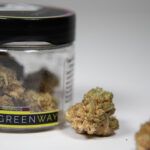Current Growth Patterns
- Retail sales and economic impact continue to rise, but at a slower pace. In 2024, legal cannabis retail sales in the U.S. reached about $30.1 billion, up roughly 4.5 percent year-over-year, even as employment slipped by about 3.4 percent. The broader cannabis sector contributed $115.2 billion to the U.S. economy in 2024, with a projected $123.6 billion in 2025.
- Market forecasts vary: Some estimates place the U.S. market at $38.5 billion in 2024, rising to $44.3 billion in 2025 and projected to reach $76.4 billion by 2030, with a compound annual growth rate (CAGR) of 11.5 percent from 2025–2030. Other projections suggest slower growth, around $45.4 billion in 2025 with only 2.2 percent CAGR from 2025 to 2029.
- At the North America level, the market could grow from $26.6 billion in 2024 to $285 billion in 2034, depending heavily on product innovation and medical demand.
Legalization Momentum Has Slowed
- No new U.S. states legalized recreational cannabis in 2023 or 2024, and only a handful of states remain candidates. That dynamic marks a plateau after several years of rapid state-level expansion. Currently, 24 states plus DC allow recreational use, and 40 states allow medical use.
- Initial optimism around federal policy reform—especially under President Biden—has not materialized. Though the DEA opened a rescheduling review in 2024, that process remains slow and uncertain.
Key Headwinds
Oversupply and Price Pressure
- Rapid build-out of cultivation capacity post-legalization led to a glut in supply. U.S. retail prices have dropped about 32 percent since legalization in many markets like New York, Colorado, and elsewhere.
- In New York, for instance, average flower prices per 3.5 g fell from $41 to $39, with dispensaries increasing from 41 to 368 in under a year. As a result, average monthly sales per store halved, even as overall state sales reached $1.46 billion since late 2022.
Regulatory Burdens & Illegal Competition
- Heavy taxation, licensing costs, zoning delays, and limited banking access remain widespread barriers. Even in New York—a case expected to flourish—many legal businesses struggle to stay afloat and compete with illicit operators.
- The Schedule I federal classification continues to restrict access to capital, tax deductions, and interstate commerce, even as DEA review proceeds slowly.
Investor Sentiment & Valuations
- Once‑white‑hot valuations have collapsed. Combined market caps of major U.S. operators like Curaleaf, Tilray, Green Thumb, and Trulieve fell from $37 billion in early 2021 to just $4 billion by mid‑2025.
- Investor enthusiasm has cooled significantly. Companies face high debt burdens, narrow margins, and slow legislative momentum in both U.S. and international markets.
Environmental and Operational Pressures
- Indoor cultivation—dominant in legal markets—is extremely energy-intensive, consuming up to 1 percent of U.S. electricity and contributing substantial greenhouse gas emissions. Regulatory attention and sustainability concerns are mounting.
- Transition to outdoor or greenhouse methods is uneven due to zoning, weather unpredictability, and yield concerns, limiting adoption.
Opportunities & Forward Focus
- Medical cannabis and CBD‑derived products continue attracting mainstream interest. Rising pharmaceutical applications and FDA‑approved treatments like Epidiolex support long‑term demand.
- Younger demographics are shifting away from alcohol toward cannabis: weekly cannabis use rose from 4 percent in 2012 to 11 percent by 2022, while alcohol consumption declined. This shift may favor cannabis-infused beverages, products, and lifestyle brands.
- International markets like Germany (legalizing limited commercial cannabis, decriminalizing possession) offer new expansion opportunities, although market size remains small ($37 million in 2024) and regulatory uncertainty remains high.
Final Thoughts
While the U.S. cannabis industry continues to grow in absolute terms, the pace of growth is clearly slowing. The legalization wave that drove rapid expansion has largely plateaued, and the current phase is defined by oversupply, price compression, regulatory friction, and deflated investor confidence. Significant upside hinges on federal rescheduling, operational innovation, and unlocking international markets.
Growth remains possible—but the era of explosive expansion appears behind the industry. Its future depends on strategic pivots into unserved markets, product diversification, and policy breakthroughs.





